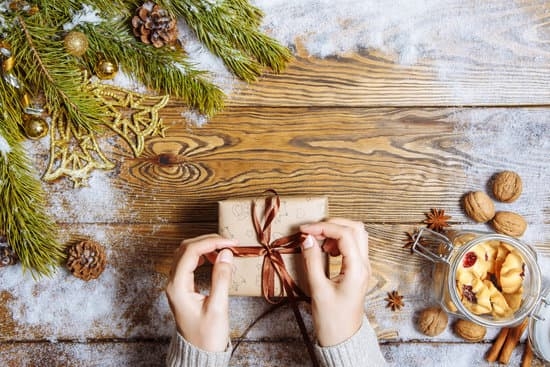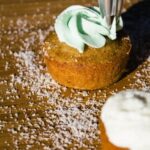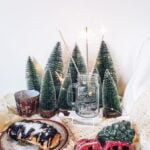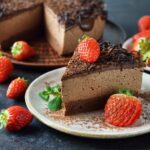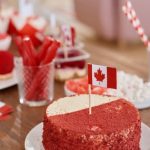What are couplers used for in cake decorating? Couplers are essential tools that play a significant role in the art of cake decorating. Whether you’re a seasoned baker or just starting out, understanding how to use couplers can take your creations to the next level. In this article, we will delve into the world of couplers and discover their importance in cake decorating.
Cake decorating is not just about making a delicious treat; it’s also about creating visually stunning masterpieces. Couplers act as connectors between the piping bag and the decorating tip, allowing decorators to easily switch between different tips without having to change the entire piping bag. This versatility enables decorators to experiment with various designs and techniques, making their cakes truly unique.
Understanding what a coupler is and how to use it can make a significant difference in your cake decorating endeavors. In the following sections, we will discuss the definition of a coupler, explore the different types available in the market, provide a step-by-step guide on using them effectively, highlight their advantages over other tools, and offer valuable tips and tricks for maximizing their potential.
So if you’re looking to elevate your cake decorating skills, read on to discover everything you need to know about couplers.
What Is a Coupler
A coupler in the context of cake decorating is a simple device that consists of two parts: a base and a ring. The base attaches to the piping bag, while the ring screws on top, securing the tip in place.
This allows decorators to easily switch out different tips on the same piping bag without having to empty and refill it with different colors or designs. Essentially, couplers act as an intermediary between the piping bag and the decorating tip, providing convenience and efficiency in cake decorating.
Definition of Coupler
In cake decorating, a coupler serves as a connector that enables decorators to interchange various piping tips quickly and effortlessly. It is especially useful when working on intricate designs that require multiple tip changes throughout the process. By using a coupler, decorators can streamline their workflow and enhance their creativity by being able to experiment with different decorations without any hassle.
Explanation of Coupler Usage
The primary function of a coupler is to secure the piping tip onto the piping bag firmly. This ensures that the tip stays in place while applying frosting or icing onto the cake.
Additionally, couplers also help prevent any leakage or seepage of frosting from the connection point between the tip and the piping bag. Overall, couplers not only simplify the process of cake decorating but also contribute to achieving cleaner and more precise designs on cakes and other baked goods.
Types of Couplers
When it comes to cake decorating, couplers play a critical role in achieving professional-looking designs and patterns on cakes. But what are couplers used for in cake decorating exactly? Couplers are essential tools that allow decorators to easily switch between different icing tips without having to change the piping bag. This saves time and effort, making the decorating process much smoother and more efficient.
There are several types of couplers available in the market, each with its own unique features and benefits. Here are some popular types of couplers that decorators can choose from:
- Standard couplers: These are the most common type of couplers used in cake decorating. They consist of two parts – a base that screws onto the piping bag and a ring that holds the icing tip in place.
- Decorating bag adaptors: These couplers are designed to fit larger decorating bags, making them ideal for working on big projects or using large quantities of icing.
- Russian ball-tip couplers: These specialized couplers are specifically designed for Russian ball tips, which create beautiful floral designs and intricate patterns on cakes.
With the variety of coupler options available, decorators can choose the type that best suits their needs and preferences. Whether you’re a beginner or a seasoned pro, having the right coupler can make a significant difference in your cake decorating experience. Experimenting with different types of couplers can enhance your creativity and expand your repertoire of techniques.
In addition to these common types of couplers, there may also be specialty or custom-designed couplers tailored to specific needs or techniques in cake decorating. It’s important for decorators to explore different options and find what works best for them based on their individual style and projects. Using the right coupler can elevate your cake decorating skills and help you achieve stunning results every time.
How to Use a Coupler
Step 1: Prepare Your Frosting
Before you start using a coupler in cake decorating, it is important to prepare your frosting. You can choose any color or consistency of frosting that you desire for your project. Fill a piping bag with the frosting and ensure that it is securely attached to the coupler.
Step 2: Attach the Coupler
To use a coupler, start by inserting the coupler base into the piping bag filled with frosting. Push it down until it reaches the tip of the bag. The screw ring should be placed over the end of the piping bag to secure the coupler in place. Make sure to tighten the screw ring firmly to prevent any leakage during piping.
Step 3: Choose Your Decorating Tip
Once you have attached the coupler to your piping bag, it’s time to choose your desired decorating tip. Simply screw on your selected tip onto the top of the coupler base. Ensure that it is securely attached before starting to decorate your cake.
Step 4: Pipe Your Design
Now that you have prepared your frosting, attached the coupler, and chosen your decorating tip, you are ready to start decorating your cake. Squeeze gently on the piping bag while guiding it over your cake surface to create beautiful designs or patterns. Remember to apply consistent pressure for even frosting distribution.
Using a coupler in cake decorating allows for easy and quick interchangeability of tips without having to switch frosting bags. This versatile tool enables decorators to create various designs efficiently and effortlessly. So next time you embark on a cake decorating project, remember what are couplers used for in cake decorating and incorporate them into your process for smooth and hassle-free decoration experience.
Advantages of Using Couplers
When it comes to cake decorating, couplers play a crucial role in enhancing the creative process and ensuring a smooth decorating experience. One of the main advantages of using couplers is the ability to easily switch between different decorating tips without having to change the piping bag. This saves time and effort during the decorating process, especially when working on intricate designs that require multiple tip changes. Couplers provide flexibility and convenience, allowing decorators to explore various design options effortlessly.
Another benefit of using couplers in cake decorating is that they help maintain a consistent flow of icing or frosting. By securely attaching the tip to the coupler, decorators can ensure a steady and even distribution of icing onto the cake surface. This results in uniform designs and professional-looking decorations. Couplers also prevent any leakage or mess that may occur when changing tips directly on the piping bag, giving decorators more control over their designs.
Furthermore, couplers are durable and reusable tools that can withstand multiple uses without compromising their functionality. This not only reduces waste but also saves money in the long run for cake decorators who frequently work on baking projects. The versatility and reliability of couplers make them indispensable tools for both beginners and experienced decorators looking to elevate their cake decorating skills.
| Benefits | Description |
|---|---|
| Easy tip switching | Save time by switching between different decorating tips without changing piping bags |
| Consistent icing flow | Maintain a steady distribution of icing for uniform designs |
| Durable and reusable | Long-lasting tools that save money and reduce waste |
Couplers vs Other Tools
When it comes to cake decorating, there are a variety of tools that can help you achieve the perfect design for your baked creations. Couplers are one of these essential tools that play a significant role in the process. But how do couplers stack up against other tools commonly used in cake decorating? Let’s take a closer look at the comparison between couplers and other tools.
Comparing Couplers With Other Tools
- Piping Bags: Piping bags are a staple in cake decorating, allowing you to pipe frosting and designs onto your cakes. While piping bags are versatile and come in different sizes, they can be messy to work with when switching out tips or colors. This is where couplers shine – they allow you to easily change decorating tips without having to empty and refill your piping bag.
- Decorating Tips: Decorating tips come in various shapes and sizes, each creating a unique design on your cakes. Couplers work hand-in-hand with decorating tips by securely holding them in place within the piping bag. This ensures that the tip stays steady while piping out frosting, giving you more control over your designs.
- Icing Smoothers: Icing smoothers are great for achieving a perfectly smooth finish on your cake’s surface. While icing smoothers have their own purpose, couplers excel when it comes to intricate designs and detailed piping work. Couplers allow you to switch between different tips quickly, making them ideal for creating various decorations on cakes.
Now that we’ve compared couplers with other tools used in cake decorating, let’s explore some helpful tips and tricks for maximizing the use of couplers in your cake decorating projects.
Tips and Tricks for Using Couplers
When it comes to cake decorating, couplers play a crucial role in achieving professional-looking designs on your baked creations. But beyond just connecting the piping bag to the tip, couplers can be used for a variety of purposes that can greatly enhance your decorating skills.
One of the key benefits of using a coupler is the ability to easily change out different tips without having to change the entire piping bag. This allows for seamless transitions between different designs and icing textures, saving time and effort in the process.
In addition to their versatility in tip changes, couplers can also be used to create multi-colored designs on your cakes and cupcakes. By using multiple separate piping bags with different colored icings attached to couplers, you can easily switch between colors while decorating, resulting in vibrant and eye-catching patterns. This method not only saves time but also reduces the number of piping bags needed for intricate designs, making clean-up a breeze.
Furthermore, couplers are ideal for both beginners and experienced decorators alike as they provide stability and control when working with various piping tips. The secure attachment of the coupler ensures that the tip stays in place while piping, allowing for precise detailing and consistent results. Whether you are outlining shapes or writing messages on a cake, couplers offer a steady grip that helps maintain accuracy throughout your decorating process.
Conclusion
In conclusion, couplers play a crucial role in cake decorating by allowing decorators to easily change and switch out decorating tips without having to empty the piping bag. They provide convenience, efficiency, and flexibility in creating various designs and patterns on cakes. Whether you are a beginner or an experienced baker, using couplers can significantly enhance your cake decorating experience.
Furthermore, by exploring the different types of couplers available in the market and understanding how to use them effectively, decorators can unleash their creativity and experiment with different techniques. The advantages of using couplers extend beyond just ease of use – they also promote precision, consistency, and cleanliness in decorating cakes. With a step-by-step guide on using couplers and tips for maximizing their utility, decorators can elevate their creations to a professional level.
As you embark on your next cake decorating project, consider incorporating couplers into your toolkit. Not only will they streamline your process and improve the quality of your designs, but they will also open up a world of possibilities for creating intricate and beautiful decorations. Take the time to familiarize yourself with how to use couplers effectively and embrace them as essential tools in your cake decorating endeavors.
Start experimenting with different tips, colors, and techniques to see what unique creations you can bring to life with the help of these versatile gadgets. What are couplers used for in cake decorating? They are the key to unlocking endless creative potential in your edible artistry.
Frequently Asked Questions
Why Do Cake Decorators Use Couplers?
Cake decorators use couplers to easily switch between different icing tips without having to change the pastry bag. It allows for quick and seamless transitions while decorating cakes, saving time and hassle.
What Does a Coupler Allows You to Do?
A coupler allows you to interchange icing tips on the same pastry bag, giving you the flexibility to create various designs with different shapes and sizes. It eliminates the need to use multiple bags for one decorating session, making the process more efficient.
How Do You Use Icing Tips Without a Coupler?
When using icing tips without a coupler, decorators have to switch tips by emptying out the pastry bag, cleaning or changing the tip manually, and then refilling the bag with a new icing color or design. This process can be time-consuming and messy compared to using a coupler for easier transitions between tips.

Welcome to our cake decorating blog! My name is Destiny Flores, and I am the proud owner of a cake decorating business named Cake Karma. Our mission is to provide delicious, beautiful cakes for all occasions. We specialize in creating custom cakes that are tailored specifically to each customer’s individual needs and tastes.

